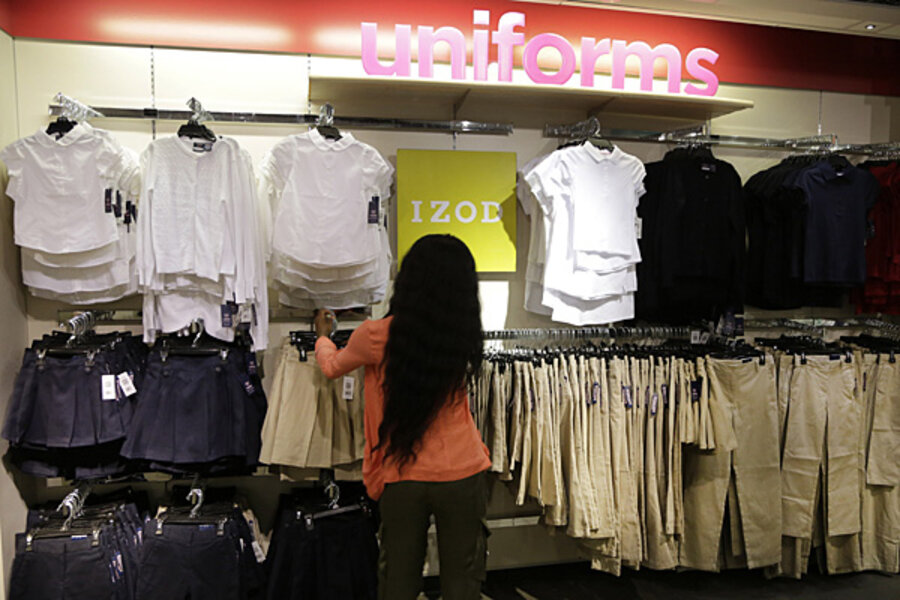Retail sales: a small but hopeful rise
Loading...
At first glance, July’s retail sales numbers, released Tuesday by the US Commerce Department, aren’t particularly impressive. But the actual breakdown tells a different story.
Retail sales rose a combined 0.2 percent in July, after climbing 0.6 percent in June. That would seem like a setback, and indeed, analysts expected a bigger gain (about 0.3 percent). But core retail sales, a closely watched measure that excludes autos and gasoline, increased 0.5 percent after going flat in June. The report heartened economists, who take it as a promising sign of accelerating consumer spending.
“This is a relatively good report,” Chris Christopher, an economist with IHS Global Insight, wrote via e-mailed analysis. “Consumers made a comeback in July. The gains in clothing, sporting, department, general merchandise and restaurants in July after a poor showing in June are pointing to renewed strength on the back-to-school shopping season and consumer spending for the third quarter. In addition, both grocery stores and restaurants posted significant gains.“
One notable drag came from auto sales, which dropped 1 percent in July on the heels of a very strong June. Barclays economist Peter Newland characterized the drop as “partial payback for strong gains in May and June,” rather than a weakening of the industry.
Strong gains in grocery stores, sporting goods, and other "core" categories are seen as a reliable reflection of longer-term spending trends, so many analysts take such gains as a promising sign for further economic growth. Gasoline also fared well, with a 0.9 percent increase.
The biggest losses came in furniture sales, which fell 1.4 percent. Electronics and building materials also slid, by 0.1 percent and 0.4 percent, respectively.






